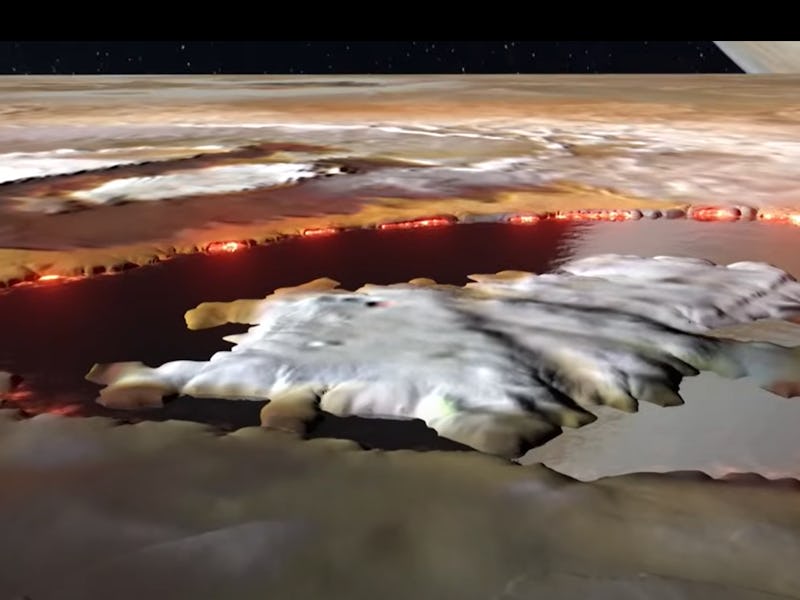NASA’s Juno Spacecraft Stumbled On A Glistening Lava Lake On Jupiter’s Moon Io
Loki Patera is like no place on Earth.

NASA’s Juno spacecraft recently spotted a glassy-smooth lava lake amid the volcanic hellscape of Jupiter’s moon Io.
When Juno’s orbit swooped past Io last December, its cameras captured a mirrorlike reflection from a small patch of the moon’s surface. The strangely shiny landmark turns out to be a lava lake, covered with a thin crust of smooth, gleaming volcanic rock. The rock was probably something like obsidian, a natural glass that forms from cooling magma here on Earth. Known as Loki Patera, the lava lake stretches 127 miles long and is dotted with rocky islands, and its edges glow with heat from the molten magma just beneath the surface.
Loki Patera isn’t the first lava lake scientists have spotted on Io; previous spacecraft, including Galileo (RIP) have also sent home images of similar features, but Juno’s pics are the clearest and most detailed. Based on Juno’s data, NASA created this animation of what a flight over Loki Patera might look like.
This is an artist’s illustration, based on the images from Juno; Juno captured a lot of detail, but not quite this much.
On Io, lava lakes like Loki Patera probably form when the ground over a magma reservoir sinks or collapses. Earth has similar features called calderas, which form when a volcano erupts and its top collapses inward because there’s less magma underneath to support it. Io’s paterae (the plural of patera) are similar to calderas on Earth and Mars, but they’re also different in ways that suggest they may form a little differently. A 2001 study, which used data from Galileo, suggested that tectonic movements may pull pieces of Io’s crust apart, leaving gaps that collapse and form paterae.
Once a patera like Loki forms, lava usually floods its floor – and often spreads well beyond the edges of the patera. The lava pours in from underground magma chambers like the one planetary scientists say probably lies beneath Loki Patera. Galileo captured an image of a patera on Io, with magma gushing in from fissures at the base of its rocky walls, back in 2000.
NASA’s Galileo spacecraft captured this image of lava seeping into a patera on Io; it’s the one outlined in red at the far left of the image.
The surface of Loki Patera is exposed to the poisonous atmosphere of Io, so it slowly cools into a hard, thin crust of volcanic glass, which reflects sunlight so brightly in Juno’s images. Islands of rock — rock with a higher melting point than the magma beneath the patera — dot the middle of the lava lake. Glowing hot magma lines their shores and the lake's edges, peeking through cracks that form at the edges of the glassy crust.
Picture a frozen lake here on Earth: smooth ice on the surface and liquid water beneath. Now imagine that it’s all lava instead of water, and that’s Loki Patera.
But unlike ice, rock gets heavier, not lighter, when it cools and solidifies. Eventually, the crust will be too heavy to float on top of the liquid, molten rock beneath, and it will sink into the magma. This happens every Earth year or two, leaving the bubbling molten surface of the lava lake exposed, which spacecraft like Juno can see because the molten rock radiates about ten times more heat than the cooled, glassy crust.